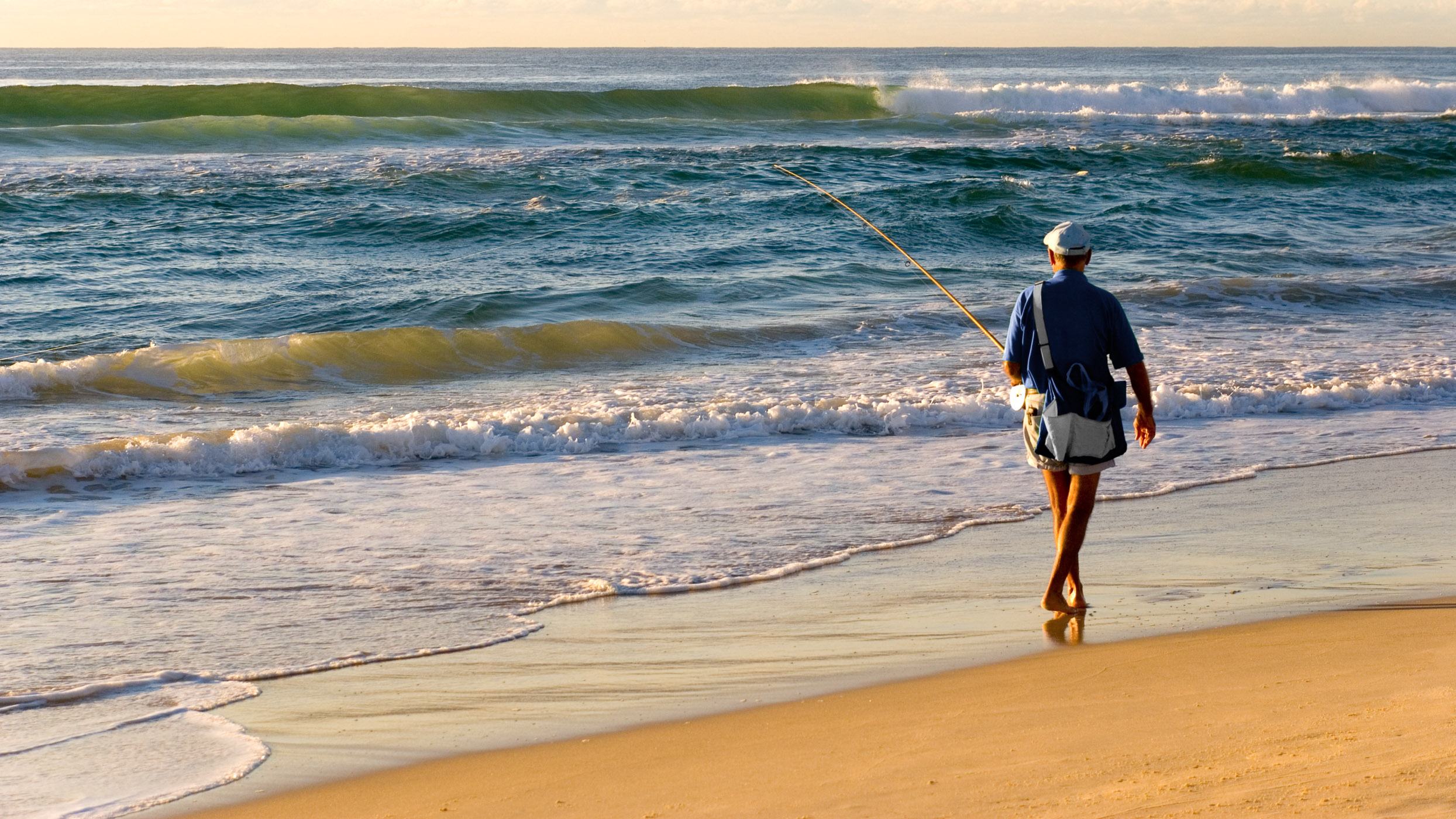A healthy coast and sea, managed for the greatest wellbeing of the community, now and into the future.
The marine estate reforms are a result of the NSW Government’s Independent Scientific Audit of NSW Marine Parks (MEMA 2013). Following this Audit, the Marine Estate Management Act 2014 was enacted which established the Marine Estate Management Authority (the Authority). This legislation and governance structure support the implementation of the reforms. The Authority's priority areas of work are defined in the Schedule of works and Marine Estate Management Authority’s Annual Reports highlight progress on reform implementation, as outlined below.
Progress with implementation since March 2013
Governance - the Marine Estate Management Authority was created in 2013 to set the strategic framework and priorities for management of the NSW marine estate by key government agencies. The independent Marine Estate Expert Knowledge Panel (the Panel) was also established in 2013 to provide expert advice to the Authority on key knowledge needs and support evidence-based decision making.
Legislation – in 2014 the NSW Government repealed the Marine Parks Act 1997 and introduced the Marine Estate Management Act 2014 to support the reforms and provide for co-ordinated management of the marine estate. The Act does this by:
- Providing for the management of the marine estate consistent with the principles of ecologically sustainable development.
- Establishing two advisory committees, the Authority and the Panel.
- Requiring the development of a marine estate management strategy to address priority threats identified through a statewide threat and risk assessment.
- Facilitating the maintenance of ecological integrity, and economic, social, cultural and scientific opportunities.
- Promoting the coordination of government programs.
- Providing for a comprehensive system of marine parks and aquatic reserves.
Principles and processes - the Marine Estate Management Authority and the Marine Estate Expert Knowledge Panel are currently undertaking a five-step decision making process in providing advice to the NSW Government. This process, informed by ten underpinning principles for managing the marine estate is outlined in Managing the NSW Marine Estate: Purpose, Underpinning Principles and Priority Setting (PDF, 2373.94 KB). Step one of the process involved identifying community benefits and threats to the marine estate. A threat and risk assessment was then carried out against the identified community benefits. The Threat and Risk Assessment Framework for the NSW Marine Estate (MEMA 2015) provided technical guidance on step two. Guidelines for assessing management options for the NSW marine estate (PDF, 596.9 KB) currently provide a methodology to review, develop, assess and recommend management responses to priority threats and opportunities identified for the NSW marine estate which are steps three and four, respectively.
Work commenced to date:
- Marine estate management strategy – the Strategy will provide the overarching framework for marine estate management over the next decade. It will outline management initiatives to address the priority threats to the NSW marine estate and to maximise community benefits. Read more
- Marine integrated monitoring program – step five of the decision making process requires the Authority to establish a strategic monitoring, evaluation and reporting program to measure the success of the Strategy at reducing priority threats, maximising community benefits and addressing key knowledge gaps over time. It will ensure management is accountable, providing transparency to the community and promoting strategic research to inform adaptive management. Read more
- Marine estate management regulation review - the Regulation was reviewed in September 2017 and following public engagement has now been remade and is in force. The review included minor amendments to provide consistency and streamline the management of aquatic reserves and marine parks. Read more
- Marine protected area policy statement (policy statement) – the policy statement (PDF, 561.57 KB) outlines the future role and purpose of marine protected areas in marine estate management. This Policy Statement supersedes the former NSW Government policy paper “Developing a representative system of marine protected areas in NSW – an overview” (November 2001). Read more
- Statewide threat and risk assessment (TARA) – the TARA represents step two in the five-step decision making process and identifies the threats and their associated risk levels (minimal, low, moderate or high) to the environmental assets and the social and economic benefits derived from the NSW marine estate. Read more
- Hawkesbury shelf marine bioregion assessment - During 2015-16, the Authority undertook this Assessment with the aim of enhancing marine biodiversity conservation whilst balancing a wide range of recreational and commercial uses in the bioregion. This assessment was a response to a recommendation by the 2012 Independent Scientific Audit of Marine Parks in NSW (the Audit). that “mechanisms be found for enhancing the protection of biodiversity in areas with identified shortfalls, namely the Hawkesbury Shelf and Twofold Shelf marine bioregions”. Read more
- Marine estate community survey – the survey commissioned in 2014 by the Authority as part of step one, identified community views and values in relation to the NSW marine estate. These views have and will continue to underpin policy development and schedule of works (PDF, 189.81 KB) in the NSW marine estate. Read more
- Ocean, beaches and headlands – As part of the NSW Government’s response to the Audit in 2013, an amnesty was placed on shore-based recreational line fishing restrictions from ocean beaches and headlands in mainland marine park sanctuary zones. An assessment of the impact of these activities was undertaken by the Panel and reviewed by the Authority. The outcomes of this initiative are pending. Read more
Government re-sets the priorities for marine estate management
The NSW Government is re-setting the ambitious agenda for the marine estate reforms to ensure evidence-based, holistic and cohesive management of some of the State’s most valued assets – its coastline, estuaries and marine waters. The revised agenda takes into account key reforms that are at critical stages of development and implementation relating to the management of the NSW marine estate, including the commercial fisheries business adjustment program, coastal reforms, regional ports strategy and Crown land management review.
The Marine Estate Management Authority will now progress the Marine Estate Management Strategy with public engagement on the draft Strategy from 30 October to 8 December 2017. A final Strategy will be delivered in early 2018.
This statewide work has also considered feedback from the NSW community on eight proposed management initiatives to enhance marine biodiversity while achieving balanced community outcomes in the Hawkesbury Shelf marine bioregion. A summary report (PDF, 964.07 KB) detailing the community engagement findings is now available on the Marine Estate website.
Some of the initiatives proposed for the Hawkesbury Shelf marine bioregion, such as addressing water quality, litter and marine debris, restoring coastal habitats, research priorities, wildlife interactions, improving boating infrastructure and land use planning outcomes, are not bioregion specific. Rather they respond to threats that have been assessed as a priority for the whole of the NSW marine estate.
The NSW Government has tasked MEMA to incorporate the Hawkesbury Shelf marine bioregion assessment’s broader initiatives into the statewide Strategy. Several initiatives for the Hawkesbury Shelf marine bioregion, are progressing this year including reducing resource use conflict in Pittwater and regional boating strategies for Lake Macquarie and Pittwater. These projects will be headed by the Department of Primary Industries and Transport for NSW respectively.
Further information is available in the FAQs (PDF, 812.68 KB) and media release.
More information
- Media release - Reducing threats to the NSW marine estate
- Newsletter - Marine Estate Reforms October 2017 (PDF, 2411.65 KB)
- FAQs - Marine Estate Reforms Progress Update (PDF, 812.68 KB)
- Marine protected areas within the NSW marine estate – their role and purpose (PDF, 561.57 KB)
- Guidelines for assessing management options for the NSW marine estate (PDF, 596.9 KB)
- Managing the NSW marine estate: purpose, underpinning principles and priority settings (PDF, 2373.94 KB)
- Threat And Risk Assessment Framework for the NSW Marine Estate (PDF, 1824.18 KB)
- Marine Estate Schedule of Works (PDF, 189.81 KB)
- NSW Government response to the Marine Parks Audit - A new approach to managing the marine estate (PDF, 448.64 KB)









